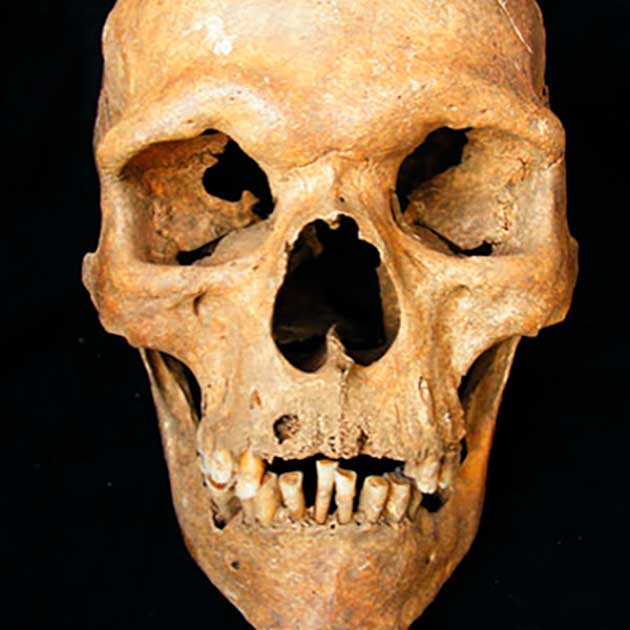The oldest known clinical instance of Klinefelter Syndrome was found in a Portuguese skeleton that was 1,000 years old.
Men who have Klinefelter Syndrome, often known as the “47,XXY” syndrome, have an extra X chromosome. This extremely rare genetic disorder is not hereditary. An 11th-century skeleton discovered in northeastern Portugal was confirmed to have the genetic abnormality.

KLINEFELTER SYNDROME: CONDITIONS AND SYMPTOMS
The primary effects of Klinefelter Syndrome are infertility, little or no sperm production, and small, dysfunctional testicles. It is reported to occur in every 1,000 live genetic male births and can adversely impact motor skills and mental development.
As of now, the only recognizable risk factor has been seen in mothers who have children after the age of 40. This condition was only first understood and diagnosed in 1942, by endocrinologist Harry Klinefelter.
From a small pool of individuals studied with Klinefelter Syndrome, researchers have found that the average lifespan of a person with this condition is reduced by 2.1 years. The condition cannot be cured by modern medicine, but it can be treated, most notably with testosterone replacement therapy.

The prevalence in the population is believed to be 0.1-0.2%, and most people don’t have conditions that are severe enough to be diagnosed. More such data and the find in question has been explored in a study by international scientists published in The Lancet .
Those with undiagnosed and untreated Klinefelter syndrome can develop adult autoimmune problems like rheumatoid arthritis, breast cancer, and bone marrow and lymph node issues. Weak bones, poor mental health, and lung disease are also possible conditions caused by this disease.
“Typically, people with Klinefelter’s syndrome are tall, have broad hips, sparse body hair, small testes, and gynaecomastia; they may have mandibular prognathism. Obesity, low glucose tolerance, and diabetes are observed, as well as osteoporosis because of androgen deficiency,” wrote the authors of the study, led by Dr João Teixeira.

THE STUDY AND THE DISCOVERED SKELETON
Dr. Teixeira is an ARC Discovery Early Career Researcher Award (DECRA) fellow at The Australian National University (ANU), and under his tutelage a team of genetic, statistical, archaeological, and anthropological experts, were able to confirm the Klinefelter syndrome diagnosis. They were ᴀssisted by researchers from the University of Coimbra in Portugal, who helped with the initial radiocarbon dating process.
The discovery was made by the archaeologists while excavating at the Torre Velha necropolis in northeastern Portugal, which has revealed 59 graves so far.
The skull featured syndrome symptoms like larger than average teeth, and a debilitating gum condition that had taken over the soft tissue in his mouth.
He was found in an individual oval-shaped tomb, without a cover or any burial goods, buried in the supine position, with arms crossed over the chest. The grave was aligned in the typical west-east orientation of Christian burials.
ᴀssociate Professor Bastien Llamas, Head of Molecular Anthropology at the Australian Center for Ancient DNA, said, “In recent years, ancient DNA helped rewrite the history of worldwide human populations. Our study demonstrates it is now a valuable resource for biomedical research and the growing field of evolutionary medicine.”
This is after Dr. Texeira opined that aDNA always requires a cautious approach, as “DNA from osteological remains is often scarce, degraded, fragmented, and unsuitable for analysis…”
The aDNA was extracted by Xavier Roca-Rada, a graduate student at the University of Adelaide, who stated, “genetic analysis was undertaken to computationally map the degraded DNA fragments of the X and Y chromosomes to the reference human genome.”
Clearly ancient DNA is useful for the establishment of a historical record, the combination of different lines of evidence across a variety of disciplines, and the frequency of different health conditions through time can be analyzed with a method like this one. In fact, going forward, this method can be used to improve the study of chromosomal abnormalities in archaeological specimens, including those with Down syndrome.





